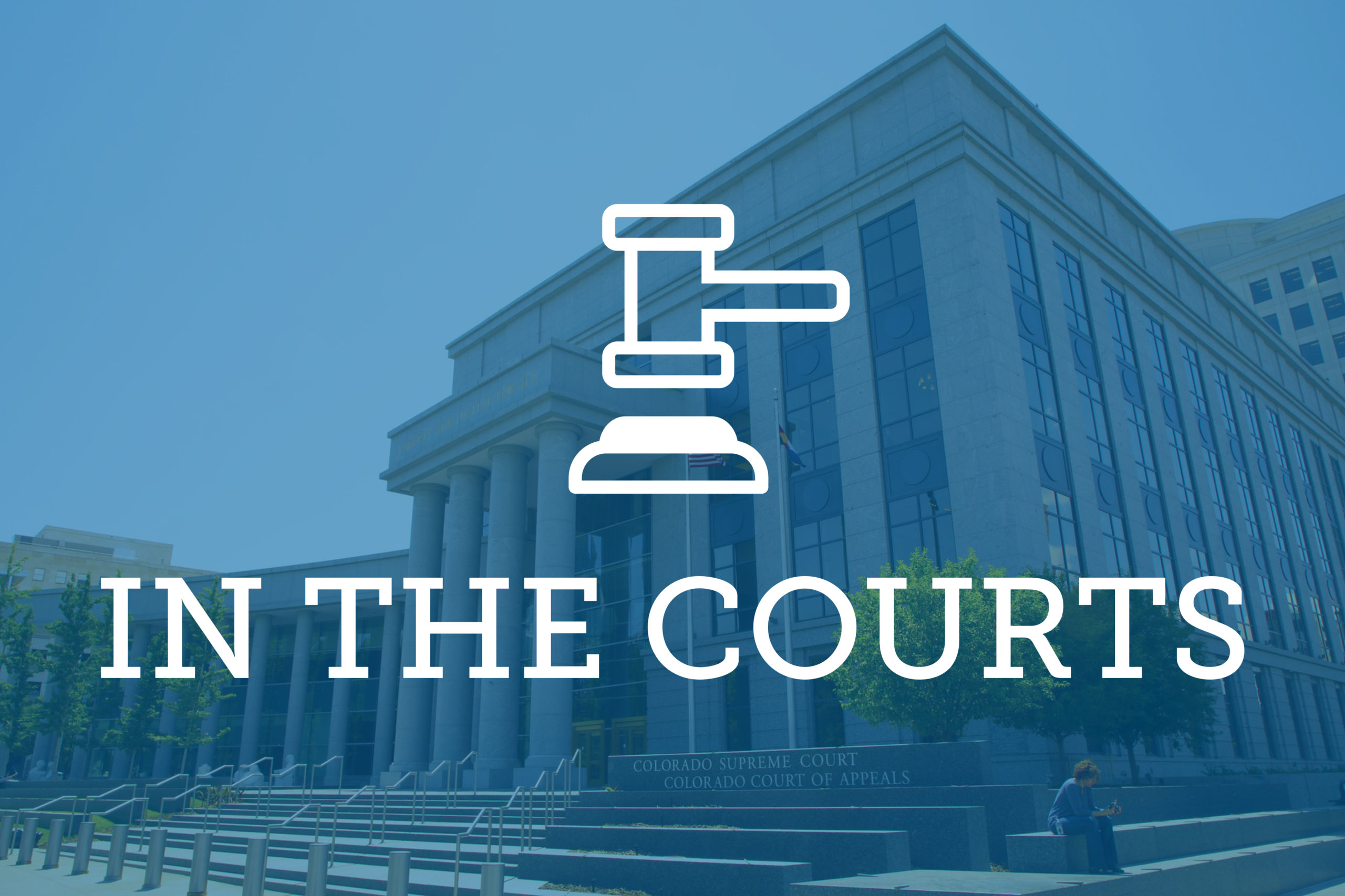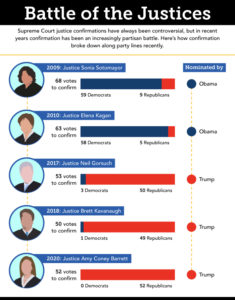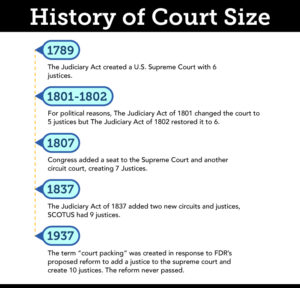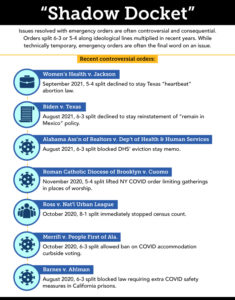
U.S. Supreme Court debates are nothing new. Since the high court was created in 1789, questions about its power, procedures and size have been brought by politicians and the public alike. Calls to make changes aren’t historically unique, but the recent debate over the court’s procedures, justice confirmation and more have fueled reform discussion.
Last week, President Joe Biden’s Presidential Commission on the Supreme Court of the United States voted to send its final report on current SCOTUS reform debates to the president. The commission took a neutral stance on all proposed reforms, but it extensively documented the history of the high court and current debates.
Battle to Confirm
Five of the court’s nine justices were confirmed in the past 12 years under the Obama and Trump administrations. The U.S. Supreme Court sits at a 6-3 conservative majority.
The report pointed out that confirmations of justices have historically been embroiled in politics. Former Justices Louis Brandeis and Thurgood Marshall faced antsemitic and racist opposition during confirmation and John Parker, G. Harold Carswell, Clement Haynsworth, Jr. and Robert Bork were not confirmed largely for racist and pro-segregation views.
Votes to confirm the newest justices decreased and increasingly split along party lines. The commission surveyed former Senate staffers from both parties who agreed confirmation has become partisan but disagreed on the reasons for the divide.

“Court Packing”
One of the most controversial SCOTUS reform debates is increasing the court size by adding justices. Proponents argue that the court’s current conservative majority was cemented with irregular and partisan Senate practices and undermined the court’s impartiality. Opponents say adding justices would set a dangerous precedent and also undermine the court’s independence.
Since 1837, the U.S. Supreme Court has had nine justices. But, as the report pointed out, the high court’s size changed often for political reasons.

Behind the Curtain
Use of the “shadow docket,” a catch-all term for orders and summary decisions that defy the U.S. Supreme Court’s normal procedures, has increased in recent years. While it’s hard to measure precisely how the use of the shadow docket has changed, one legal expert estimated that since 2005, the use of shadow docket for orders that change the status quo of lower courts has been “in an upward trend.”
One type of shadow docket ruling, emergency orders, has drawn increased criticism as they’ve been used to decide many controversial and national issues. While technically temporary, emergency orders are often the final word on an issue. The report pointed out a handful of 6-3 and 5-4 emergency orders with national implications that did not come with an opinion explaining the legal basis for dissents and majority rules.

Read the full court orders referenced in the “shadow docket” infographic at:
- https://www.supremecourt.gov/opinions/20pdf/21a24_8759.pdf
- https://www.supremecourt.gov/orders/courtorders/082421zr_2d9g.pdf
- https://www.supremecourt.gov/opinions/20pdf/21a23_ap6c.pdf
- https://www.supremecourt.gov/opinions/20pdf/20a62_n7ip.pdf
- https://www.supremecourt.gov/opinions/20pdf/20a62_n7ip.pdf
- https://www.supremecourt.gov/opinions/20pdf/20a67_3e04.pdf
- https://www.supremecourt.gov/opinions/19pdf/20a19_k537.pdf

